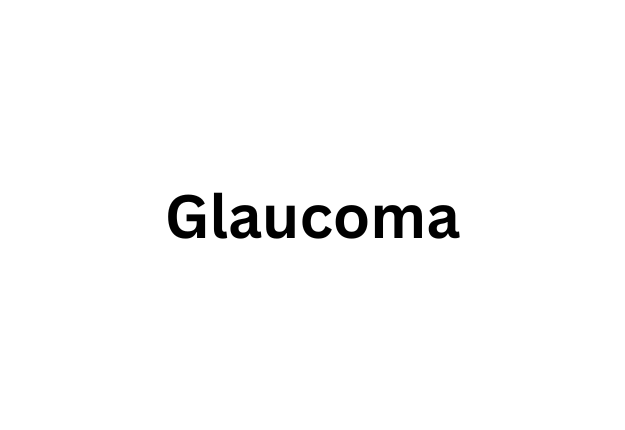What is glaucoma?
Glaucoma is a group of conditions in which the optic nerve, which allows you to see by transmitting images to your brain, is damaged. This damage leads to blind spots in your vision, and eventually, blindness is a matter of years, if untreated.
Symptoms
The most common kind of glaucoma is open-angle which occurs without any warning signs. Changes in vision do not become noticeable until the condition is advanced and damage is permanent. Acute angle-closure glaucoma is a medical emergency that requires immediate attention.
Symptoms usually occur in both eyes and the symptoms depend on the kind of glaucoma and the stage of the condition. For open-angle glaucoma, symptoms include patchy blind spots in peripheral and/or central vision, and in advanced stages, tunnel vision.
For acute angle-closure glaucoma, which is a medical emergency that requires immediate attention, symptoms include
- pain in the eye,
- redness of the eye,
- severe headache,
- blurred vision,
- nausea,
- vomiting,
- seeing halos around lights,
- and tunnel vision.
 Causes of glaucoma
Causes of glaucoma
Damage to the optic nerve in glaucoma occurs due to elevated pressure in the eye. High pressure in the eye is caused by a buildup of the fluid that flows through the eye, called the aqueous humour. Normally, the aqueous humour drains into the front part of the eye, called the anterior chamber, through a tissue called the trabecular meshwork, at the place where the iris and the cornea meet, called the drainage angle. When there is too much fluid, or the fluid does not drain properly from the eye, the fluid will not flow at a normal rate and there will be elevated pressure in the eye.
Open-angle glaucoma
In open-angle glaucoma, the angle where drainage occurs is open, but the trabecular meshwork becomes blocked. This blockage results in gradually increasing eye pressure that slowly damages the optic nerve.
Angle-closure glaucoma
In angle-closure glaucoma (also known as closed-angle glaucoma) bulging of the iris results in a narrowed or blocked drainage angle. This stops the circulation of the aqueous humor in the eye and raises eye pressure. This type of glaucoma can happen either suddenly (called acute angle-closure glaucoma), or it can happen over time (called chronic angle-closure glaucoma).
Risk factors for glaucoma
Risk factors for glaucoma include
- a family history of glaucoma,
- being over age 60,
- being African-American, Hispanic, Japanese, Russian, Scandinavian, or Irish,
- high internal eye pressure (called intraocular pressure),
- nearsightedness,
- a previous eye trauma,
- Deficient estrogen
- chronic use of eye drops with corticosteroids,
- a history of heart disease, high blood pressure, diabetes, and/or sickle cell anemia,
- and having genes related to high eye pressure.
Diagnosis
Your doctor or optometrist will typically diagnose glaucoma starting with a review of your medical history followed by an eye exam. Additional tests may also include
- measuring internal eye pressure,
- testing for damage to the optic nerve, including taking images of the optic nerve,
- checking for areas of vision that have been lost,
- measuring the thickness of the cornea,
- and checking the drainage angle.
Treatment
The loss of vision caused by glaucoma is irreversible. Glaucoma eventually leads to blindness if untreated. Thus, it is important to have regular eye exams to check eye pressure. Early recognition of glaucoma means that loss of vision can be prevented or delayed.
Eye exams should be scheduled every four years after turning 40 if risk factors for glaucoma are not present. Eye exams should be scheduled every two years if risk factors are present or you are over the age of 65.
Treatment for glaucoma is a lifelong commitment to lower eye pressure. Some options for treatment include the following.
Eyedrops
Prostaglandins increase the flow of liquid out of the eye to reduce eye pressure. Beta-blockers lower the amount of fluid produced in the eye. Alpha-adrenergic agonists both lower fluid production and increase fluid flow from the eye. Miotic or cholinergic agents increase the output of fluid from the eye.
Oral medications
Oral medications can be prescribed together with eyedrops to lower eye pressure. Carbonic anhydrase inhibitors are usually prescribed, which work by reducing the production of fluid in the eye.
Surgery
Surgery can be used to increase the drainage of fluid and lower pressure in the eye. There are several possible procedures. Laser therapy is used to treat open-angle glaucoma. A laser beam is used to re-open blockages in the trabecular meshwork. Filtration (or filtering) surgery is where a surgeon opens up the sclera (white part of the eye) and removes some of the trabecular meshwork. Drainage tubes can be inserted into the eye to increase the output of fluid and lower eye pressure. Electrocautery is a minimally invasive procedure also used to remove some of the trabecular meshwork.
As acute angle-closure glaucoma is a medical emergency, immediate treatment is required to lower eye pressure. Medication and surgical procedures are usually required. One such procedure is a laser peripheral iridotomy, where a laser is used to make a small hole in the iris to let fluid out.
Lifestyle
Changes to lifestyle can help to maintain healthy eye pressure. Some of the lifestyle habits include
- regular exercise to reduce eye pressure for those suffering from open-angle glaucoma,
- reducing caffeine intake,
- consuming small amounts of fluid throughout the day to stay hydrated,
- sleeping with a pillow that raises the head slightly (around 20 degrees) to reduce eye pressure,
- and taking medicine and using eyedrops as prescribed.
References
Coleman AL. Advances in glaucoma treatment and management: surgery. Invest Ophthalmol Vis Sci. 2012;53(5):2491-4. https://doi.org/10.1167/iovs.12-9483l
Kaufman PK & Rasmussen CA. Advances in glaucoma treatment and management: outflow drugs. Invest Ophthalmol Vis Sci.2012;53(5):2495-500. https://doi.org/10.1167/iovs.12-9483m
Weinreb RN, Aung T & Medeiros FA. The pathophysiology and treatment of glaucoma. A review. JAMA. 2014;311(18):1901-1911. doi:10.1001/jama.2014.3192.
Written By: Anna Zhou



